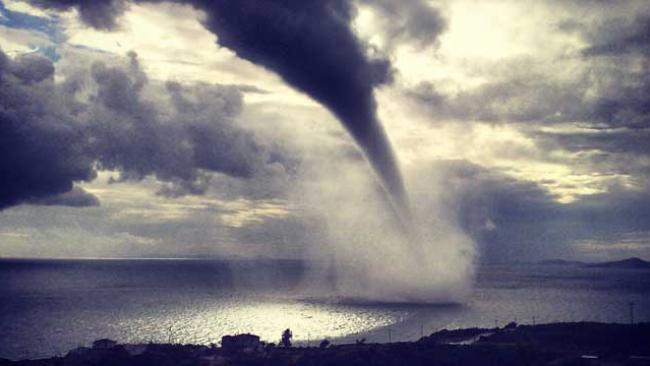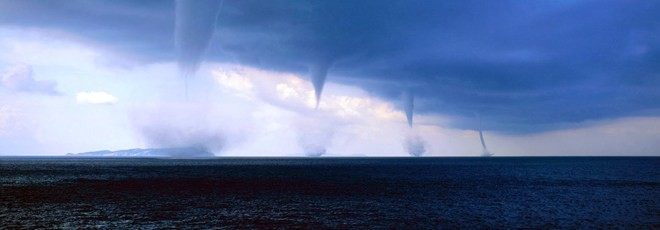Waterspouts, columns of water coming out of the sea, are usually found in the tropics or subtropical areas but they are becoming more frequent in Greece. Seeing a waterspout is considered a once-in-a-lifetime event, however more and more people are seeing waterspouts in the Ionian and Aegean.
Italian Roberto Giudici managed to take photos of waterspouts while sailing dangerously close to them while sailing off the Greek islands of Orthoni in the Ionian Sea:
This summer twin waterspouts were spotted at Pelion on July 15.
Last week, nine waterspouts shot out of the water on Saturday morning in the Northern Aegean, with three of these between Skiathos and Skopelos:
Two waterspouts shot out of the water near Mt. Athos east of “Megisti Lavra” monastery who sent the monks shooting off to the church to pray with just one remaining on the balcony to take photos of the once-in-a-lifetime phenomenon.
“The view was impressive,” say the monks. “We were afraid that it might come to the monastery and did not know what would be the consequences.”
Here’s a video of Carl Phillips a tourist who came dangerously close to one while vacationing on Rhodes –
An explanation of the phenomenon by metereologist Michalis Sioutas, as detailed in his study “A tornado and waterspout climatology of Greece”:
Spatial distribution showed that tornadoes are more frequent over western Greece and the Ionian coasts with a local maximum over northwest Peloponnese. Waterspouts occur in both the Aegean and the Ionian Sea mostly in summer and autumn, with a peak in September, while a considerable geographical maximum is located over north off the shore of Iraklion, Crete Island. A preliminary estimate of probability of tornado occurrence for each of the 51 Greek prefectures plus the Mount Athos area, showed highest values for Kerkyra Island and Elias prefectures, western Greece. Analysis based on intensities as assessed by damage data, indicated that the majority of tornadoes reached T4 of the T-scale or F2 of the F-scale. Short wave trough is found as the most relevant synoptic circulation pattern to tornadic activity. Thermodynamic and wind parameters showed a wide range of values, suggesting that threat levels should be adjusted for various areas since tornadoes and waterspouts can occur in different environments.




































